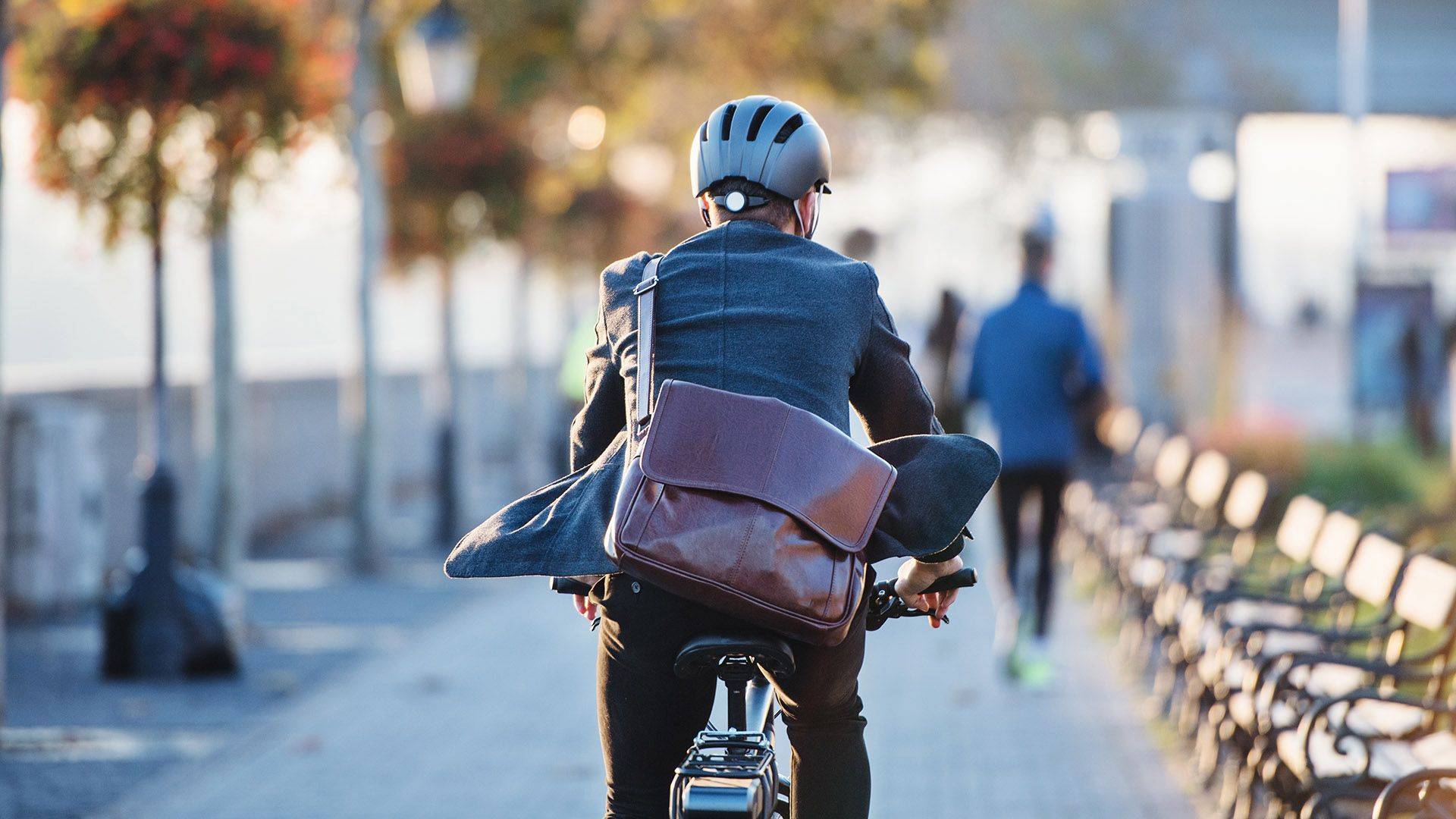
Harnessing lasting climate benefits from the coronavirus lockdowns
Recent restrictions on movement and the resultant drop in economic activity have been tough on people but good for emissions reductions. As we emerge from the coronavirus crisis, AECOM’s Colin Wood and Network Rail’s Jamie Shaw look at how we can ensure that the environmental gains aren’t temporary.

While there are many hardships associated with the coronavirus crisis, less activity has meant lower greenhouse gas emissions, an indication of how quickly we could slow climate change if we switched to renewable sources of energy. Global carbon dioxide emissions could record the largest ever annual drop in 2020 – more than during any previous crisis on record, including wartime. This has led to a vast improvement in air quality and the drop in economic activity has led to thriving wildlife, demonstrated by increased animal sightings in urban areas, including deer grazing near Washington DC homes – not far from the White House – and peacocks strutting through the streets of Harpenden, near London.
As appreciated as the climate gains are, when we emerge from the health crisis such benefits risk being lost. Experience from previous downturns suggests that climate commitments could even be downgraded owing to fears that they hold back economic growth. Already, some are pushing back against existing commitments to carbon neutrality by 2050 – but we cannot afford to let such pledges slide. As significant as the recent lockdown-related drop in emissions is, what we have just seen needs to be maintained; every year for the next decade, if we are to limit global warming to 1.5 degrees Celsius .
AECOM was one of more than 200 leading UK businesses calling on the government to ensure the recovery doesn’t comprise social, environmental and climate goals. In an open letter, CEOs said: “We must use the recovery to accelerate the transition to net zero. Efforts to rescue and repair the economy in response to the current crisis can and should be aligned with the UK's legislated target of net zero emissions by 2050 at the latest.”
As appreciated as the climate gains are, when we emerge from the health crisis such benefits risk being lost. Experience from previous downturns suggests that climate commitments could even be downgraded owing to fears that they hold back economic growth.
Keeping a lid on emissions after the lockdowns end
We believe that the current situation presents an opportunity for deepening our understanding of resilient and sustainable development and infrastructure with a view to bringing about lasting change. Three areas merit particular attention:
- Behavior change: people have witnessed a vision of what low emissions looks like as the pandemic has accelerated ways of operating that have positive environmental impacts. We can lock these behaviors in, if we act now to embed them.
- Fast, effective action: the coronavirus response has required rapid, pragmatic solutions. We need to bring that same urgent, solutions-orientated and investment-focussed mindset to the climate crisis.
- Co-operation: if there’s one thing this crisis has taught us, it’s that we are stronger together.
1. Behavior changes
Lifestyles and working practices have changed overnight, many in ways that benefit the natural environment. Barriers to home working have been broken down, a behavior change that might have taken years or even decades to engender without coronavirus. Delivery services have also seen an increase thanks to a combination of health concerns and shuttered stores. Both have helped reduce emissions and are here to stay. Although we’re unlikely to see a full return to past practice, there could be slippage if we don’t lock in change.
With doorstep delivery, Amazon is leading the way in terms of reducing emissions and including its supply chain. In September 2019, the American tech giant pledged to be carbon neutral by 2040 and is encouraging its value chain to join in their Climate Pledge. To meet these goals, its e-commerce operations are developing their own delivery network, investing in a fleet of electric and autonomous vehicles . Amazon Web Services (AWS) has also pledged to achieve 100 percent renewables for its data center infrastructure.
For their part, employers wishing to encourage more home working might want to consider the work-related emissions of this move – and offer incentives to reduce them. The Global Workplace Analytics (GWA) estimates that we will see 25‐30 percent of the workforce working at home on a multiple‐days‐a‐week basis within the next two years. Instead of offering a company car as a benefit, employers might consider subsidizing the installation of solar panels at these workers’ homes.
2. Fast, effective action to lock in gains
The current crisis has given us the opportunity to imagine what a low carbon future could look like. It has also showed us how fast things can change.
Going forward, those who appreciate safer streets, cleaner air and birdsong could put pressure on companies and governments to invest in green infrastructure, particularly renewable energy, and facilitate personal mobility (cycling, scootering, running, walking) as a priority in our re-opened cities. This is already happening in many cities including Milan, Paris, New York and Seattle – and London has also planned to follow suit. Some US cities are committing to permanently closing to traffic streets that have been car-free during the pandemic.
To avoid an increase in car use, public transport will need to be adapted to respond to social distancing requirements and people’s safety concerns. Transport authorities are already exploring different options for reducing crowding, with Transport for London (TfL) looking at ways to slow the flow of passengers and open different routes within stations. AECOM is using pedestrian modelers to explore how junctions and entrances to stations can be managed in light of social distancing requirements.
One of the ways we can act is by using tools to make more sustainable and healthy travel choices. For example, in Dublin a new platform called My Mobility Hub encourages people to make greener and healthier choices. The platform – designed by AECOM for Smart Dublin, Dublin City Council, Dun Laoghaire-Rathdown County Council and Enterprise Ireland – also allows users to track their travel behaviors and record their sustainability score.
Of course, green infrastructure requires investment. On the public side, governments should ensure that stimulus funding reduces climate risks and carbon emissions or builds resilience. On the corporate side, with interest rates at their lowest ever, now is the time to accelerate decarbonization and to retire economically marginal, carbon intensive assets.
3. Cooperation is key
Another area where the crisis response has seen increased levels of cooperation is the sharing of data between different interest groups. In the rail industry, for example, the willingness to cooperate during the crisis should be harnessed to promote greater collaboration and information sharing across the supply chain post lockdowns. By making business more informed, it will help drive down carbon emissions in line with climate science targets. For example, currently carbon assessments are based on a lot of assumptions. If actual emissions data was shared, that could be an incentive for parts of the supply chain to invest in lower carbon solutions. Fully customizable carbon assessment tools which can be used across a project’s entire lifecycle should help embed this process.
Network Rail has been working to develop its own science-based emissions reductions targets, and has agreed a plan regarding direct emissions and indirect emissions from purchased energy. The owner and manager of Britain’s rail infrastructure network is working with its supply chain, including AECOM, so it can map and plan to reduce all indirect emissions in order to publish their global carbon footprint by the summer.